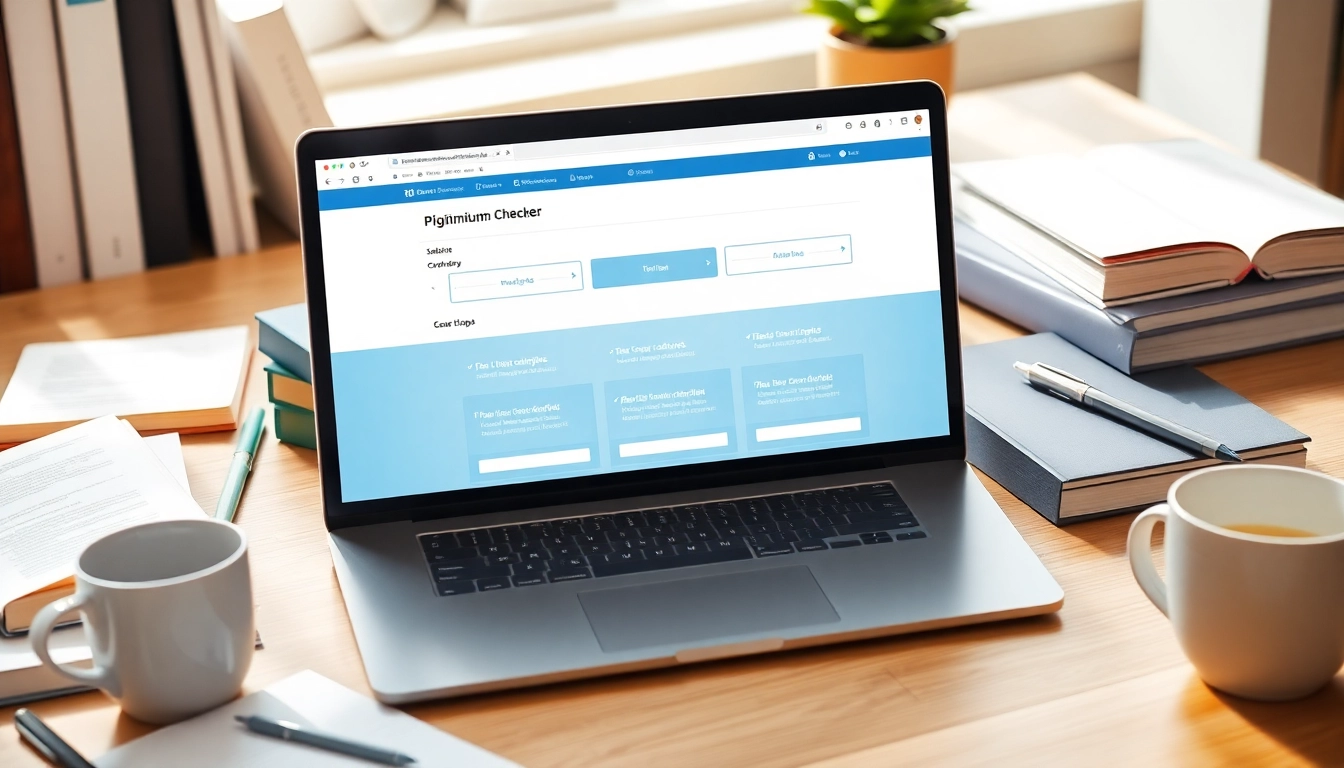In the realm of academia and content creation, the pursuit of originality is paramount. With the digital landscape teeming with information, the challenge of maintaining authorship integrity has never been more pressing. This is where a reliable plagiarism checker comes into play, serving as a tool to help writers ensure their work is unique and properly cited.
Understanding Plagiarism and Its Implications
What is Plagiarism?
Plagiarism is the practice of using someone else’s ideas, words, or expressions without proper acknowledgment, presenting them as one’s own. It can occur in various forms, ranging from outright copying to more subtle instances like paraphrasing without citation. The implications of plagiarism stretch far beyond academic penalties; they can tarnish reputations and lead to legal consequences.
Types of Plagiarism
Understanding the different types of plagiarism can help individuals recognize potential pitfalls. Common types include:
- Copy-and-Paste Plagiarism: Directly copying text from a source without crediting the author.
- Patchwork Plagiarism: Piecing together bits and pieces from various sources and presenting them as original work.
- Self-Plagiarism: Reusing one’s own previously published work without acknowledgment.
- Accidental Plagiarism: Unintentionally failing to cite sources or misattributing quotes due to a lack of understanding or knowledge.
- Paraphrasing Plagiarism: Rewording someone else’s ideas or text without proper citation.
Consequences of Plagiarism
The consequences of plagiarism can vary significantly depending on the context. In academic settings, consequences may include:
- Receiving a failing grade on an assignment or subject.
- Expulsion from academic institutions.
- Damage to one’s academic integrity and reputation.
- Legal repercussions, especially if copyrighted material is involved.
In professional contexts, plagiarism could result in job loss, damage to career prospects, and loss of credibility.
How a Plagiarism Checker Works
Key Features of a Plagiarism Checker
A robust plagiarism checker possesses several key features:
- Text Comparison: It scans and compares submitted text against a vast database, including web pages, publications, and academic papers.
- Report Generation: Provides comprehensive reports detailing matched content, potential matches, and the percentage of similarity.
- Citation Assistance: Some tools may help identify missing citations and suggest proper references.
- Integration Capabilities: These tools can often be integrated into writing software or Learning Management Systems (LMS) for seamless use.
Technology Behind Plagiarism Checkers
Modern plagiarism checkers utilize sophisticated algorithms and artificial intelligence to detect similarities between texts. They employ techniques such as:
- String Matching: Identifying sequences of words or phrases that match content in their databases.
- Semantic Analysis: Understanding the context and meaning of the text compared, enabling detection of paraphrased material.
- Machine Learning: Continuously improving the accuracy of detection by learning from new data inputs.
Interpreting the Checker’s Report
The report generated by a plagiarism checker is a critical component in assessing originality. It typically includes:
- Match Overview: A summary of the percentage of content that is original vs. matched.
- Source Links: Links to the original sources of matched text for proper attribution.
- Highlighted Matches: Sections of text that are flagged for review, showing where potential plagiarism occurs.
Understanding how to read and interpret these reports is essential for writers to take appropriate actions, whether that involves rephrasing or citing sources correctly.
Choosing the Right Plagiarism Checker for Your Needs
Free vs. Paid Plagiarism Checkers
When selecting a plagiarism checker, one of the first decisions is whether to use a free or paid service. Free tools can be a good starting point but often come with limitations such as:
- Limited databases, leading to less accurate results.
- Restricted word counts for checks.
- Less detailed reporting and analysis.
Paid plagiarism checkers usually offer extensive databases, more advanced features, and better reporting capabilities, making them a worthwhile investment, particularly for academics and professionals concerned about originality.
Factors to Consider When Selecting a Tool
When choosing a plagiarism checker, consider the following factors:
- Database Coverage: Ensure that the tool has access to a comprehensive range of sources.
- Accuracy: Look for user reviews or testimonials highlighting the effectiveness of the checker.
- User Interface: A clean, intuitive interface makes it easier to navigate and utilize the tool effectively.
- Report Clarity: The generated reports should be easy to understand and actionable.
- Cost-Effectiveness: Assess features offered against pricing to ensure value for money.
User Reviews and Recommendations
Before committing to a particular plagiarism checker, it is advisable to read user reviews and recommendations. Websites, forums, and academic communities often provide insights into the reliability and effectiveness of different tools. Peer recommendations can also guide you towards trusted options that align with your needs.
Best Practices for Avoiding Plagiarism
Effective Paraphrasing Techniques
Learning to paraphrase effectively is crucial for avoiding plagiarism. Here are some techniques:
- Understand the Source: Read the material thoroughly before attempting to rewrite it in your own words.
- Use Synonyms: Replace words with synonyms while maintaining the original meaning.
- Change the Structure: Alter the sentence structure or format when converting the text into your own expressions.
- Add Your Voice: Introduce your unique perspective or interpretation of the material to create original content.
Citation and Referencing Guidelines
Properly citing your sources is fundamental in academic writing. Follow these guidelines:
- Know Citation Styles: Familiarize yourself with different citation styles (APA, MLA, Chicago, etc.) and apply the correct one consistently.
- Keep Track of Sources: Maintain detailed records of all sources consulted during your research.
- Use Citation Tools: Tools are available that can help format citations correctly and automatically generate bibliographies.
Utilizing Writing Assistance Tools
In addition to a plagiarism checker, leveraging writing assistance tools can significantly enhance the quality of your work:
- Grammar Checkers: Ensure your writing is free of grammatical errors that can detract from your message.
- Style Guides: Utilize tools that help you maintain consistent writing style and tone throughout your work.
- Editors and Proofreaders: Consider hiring professional editors for critical documents or research papers to ensure quality.
Maximizing the Benefits of a Plagiarism Checker
Integrating the Tool into Your Writing Process
A plagiarism checker should be integrated early and throughout your writing process. Consider these strategies:
- Pre-Writing: Use the checker to analyze sources and gather material, ensuring you maintain proper citations.
- Drafting: Check each draft to confirm originality and make revisions as necessary.
- Pre-Submission: Run a final check before submission to ensure your work meets originality standards.
Monitoring and Revising Your Work
Regularly monitoring your work will help you stay compliant with originality standards. If a plagiarism checker flags content, take steps to:
- Revise the flagged sections to ensure originality.
- Reassess your citation practices and enhance them where necessary.
- Keep learning about effective writing practices to continually improve your technique and reduce the risk of plagiarism.
Enhancing Academic Integrity in Your Work
Using a plagiarism checker not only helps you produce original work but also contributes to a culture of academic integrity. Consider implementing these practices:
- Education: Educate yourself and others about the importance of originality and the potential consequences of plagiarism.
- Encourage Transparency: Foster an environment where citing sources is encouraged and valued.
- Participate in Workshops: Engage in workshops focused on writing, ethical research practices, and plagiarism avoidance.



